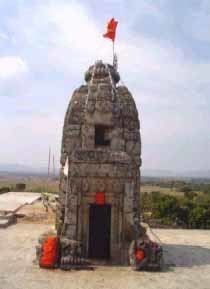Website Official website | ||
 | ||
Administrative division South Chotanagpur division | ||
Lohardaga district (Hindi: लोहरदग्गा जिला) is one of the twenty-four districts of the Indian state of Jharkhand. The district is named after the town of Lohardaga, the administrative headquarters of the district. The district was created from a portion of Ranchi district in 1983.
Contents
- Map of Lohardaga Jharkhand
- Economy
- Administration
- Demographics
- Languages
- Education and health services
- References
Map of Lohardaga, Jharkhand
The district is situated between 23°30' and 23°40' north latitudes and 84°40' and 84°50' east longitudes. The district covers an area of 1491 km².
As of 2011, it is the least populous district of Jharkhand (out of 24).
It is currently a part of the Red Corridor.
Economy
The inhabitants of this district mainly depend on agriculture, forest produce and seasonal migration to different parts of the country. 80% of the population depends upon agriculture. The main crop of this area is paddy. In the small irrigated area wheat is grown to meet the annual food sufficiency. Also this district is linked with larger vegetable markets like Jamshedpur, Rourkela and Calcutta. There is a cold storage in the district. But profitable vegetable cultivation is being limited to road side non-tribals. Generally, villagers of the district keep plough animals. Also they keep goats and poultry birds as buffer. Although there is a dairy chilling plant in the district headquarters, dairy is practised by very few people mainly non-tribal.
The net sown area is only 55% of the total area of the district. Two blocks i.e. Kisko and Senha have large area under dense forest cover. The forest cover is around 32-35% of the total area of the district. The average land holding per household is 1.65 Ha. The per capita agriculture land is around 0.28 Ha. Net irrigated area is 13.4% of net sown area (0.8% by canals, 7% by wells, 2% by tanks & 3.6% by lift irrigation and others).
Most of the villages except the hilly pockets of the district are connected with the roads. Still some of the hamlets have no linking roads. Electricity is supplied from Patratu Thermal Power Station which is in the Hazaribagh district. Out of 354 villages only 25 have rural electrification. Water supply system is not available in rural area. The villagers get their drinking water from tube wells and dug wells.
In 2006 the Indian government named Lohardaga one of the country's 250 most backward districts (out of a total of 640). It is one of the 21 districts in Jharkhand currently receiving funds from the Backward Regions Grant Fund Programme (BRGF).
Administration
Lohardaga district consists of 7 blocks. The following are the list of the blocks in Lohardaga district:
Demographics
According to the 2011 census, Lohardaga district has a population of 461,738, roughly equal to the nation of Suriname. This gives it a ranking of 549th in India (out of a total of 640). The district has a population density of 310 inhabitants per square kilometre (800/sq mi) . Its population growth rate over the decade 2001-2011 was 26.67%. Lohardaga has a sex ratio of 985 females for every 1000 males, and a literacy rate of 68.29%.
Languages
Among the languages here is Asuri, an Austroasiatic language spoken by approximately 17 000.
Education and health services
There are 318 primary schools, 68 middle schools, 20 High schools, 2 higher secondary schools and one college in the district. In this district, there is a district hospital, one referral hospital, five primary health sub-centres, ten additional primary health centres, seventy three health sub-centres. Commerce tutorials- The best coaching institute in district.
